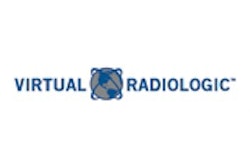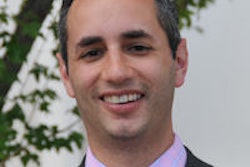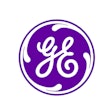A patent lawsuit filed by teleradiology giant Virtual Radiologic (vRad) hinges on a group of former employees who broke away to start their own firm, Tandem Radiology, to develop teleradiology software. But the case has also ensnared several of Tandem's clients, who hint that vRad may have competitive motives for including them in the litigation.
vRad and its NightHawk Radiology Services subsidiary filed suit against Tandem Radiology on August 19 in the U.S. District Court for the District of Arizona, charging Tandem and five of its employees with a variety of offenses ranging from patent infringement to breach of contract. Tandem customers Direct Radiology and Imaging Advantage were also named as defendants.
The origins of the litigation date to December 2010, when vRad acquired NightHawk, according to the complaint filed in the case. Shortly after the acquisition, vRad decided to discontinue NightHawk's Auto Rad 2 (AR2) software, which the firm had developed to view and route teleradiology studies from its hospital customers to the radiologists who were most qualified to read the studies. vRad said it had decided to move NightHawk's operations to its own teleradiology platform.
As the transition to the vRad platform was occurring, NightHawk employees Chris Huber, John Cardosa, and Paul Cartee left the company to start their own firm, Tandem Radiology, in February 2011. According to the complaint, the three recruited two other former NightHawk employees, Jordan Kojouharov and Kamil Rahme, who subsequently joined Tandem in June 2011, three months before they were scheduled to leave NightHawk. vRad's complaint states that Kojouharov and Rahme were two of the key software developers of AR2 and were "intimately involved" in the research, design, and development of the software.
Tandem was publicly launched in October 2011, releasing a teleradiology platform that was "remarkably similar" to the AR2 software, according to the complaint. While AR2 was developed over a period of years and had 5 million lines of source code, Tandem began offering its own platform "within a mere four months" after Kojouharov and Rahme left NightHawk. vRad also charges that Tandem recruited another former NightHawk software developer "who understood his task to be assisting in 'rewriting' NightHawk's proprietary AR2 code for Tandem's use," the complaint states.
vRad said it had the opportunity to see Tandem's platform in operation in May 2013, and the company "observed substantial similarities" to NightHawk's technology. Features and functions that Tandem markets for the software are all features of the AR2 platform, such as automated intelligent study allocation, customized rules-based study assignment, and better subspecialty utilization and turnaround times, the vRad complaint states.
"It would have been nearly impossible for Tandem to develop a teleradiology platform in four months without the confidential knowledge and information acquired by Mr. Rahme and Mr. Kojouharov and other former NightHawk employees during their employment with NightHawk," the complaint states. "Given the parallels between the two platforms and the complexity of the technology, the Tandem system could only have been developed as a result of Mr. Rahme and Mr. Kojouharov's access to the AR2 Trade Secrets and copyrighted software."
Undercutting prices?
The vRad complaint goes on to charge that Tandem has used its software to allow its customers, teleradiology providers Imaging Advantage and Direct Radiology, to undercut vRad's prices by offering a "competing platform which was created using confidential information misappropriated from NightHawk and vRad, avoiding the cost of original research and development and free-riding on the innovations of NightHawk and vRad."
Meanwhile, Huber, Cardosa, and Cartee, by virtue of their employment with NightHawk, had access to the company's "trade secrets," according to the complaint. All five former employees signed confidentiality agreements covering trade secrets as a condition of their employment at NightHawk, the complaint states; Rahme, Kojouharov, and Cartee reaffirmed their obligation in signing separation agreements when leaving NightHawk, while Cardosa and Cartee signed noncompete deals.
The complaint charges that vRad has suffered an unspecified amount of damages for which the firm asks to be reimbursed, and it also asks for an injunction against Tandem and the other defendants from using technology based on NightHawk trade secrets.
One of the firms named in the suit, Direct Radiology, said it will fight vRad's allegations. The litigation is an attempt to "stymie market competition from smaller, more responsive, physician-driven companies," the firm said in a press release.
The teleradiology market is shifting focus as radiology groups move to take back their own night coverage or contract with smaller companies, according to Dr. Kyle Henneberry, a radiologist who worked for NightHawk before founding Direct Radiology with radiologists Dr. John Arias and Dr. Lawrence Bub. As such, the lawsuit is about more than just software technology, he believes.
"vRad naming us means they are trying to make it more than a patent lawsuit," Henneberry told AuntMinnie.com. "They are going after physicians, and specifically radiologists, even though that is the customer base they purport to serve."
vRad executives, on the other hand, view the litigation as part of the company's effort to protect major investments it has made over the years, according to CEO Jim Burke.
"It's a competitive market, and we are very fortunate that we can continue to invest in our platform and our people, and through that invest in our clients and our patients," Burke said. "This is simply a matter of our requirement and our responsibility to protect the investment we made."
Representatives for Tandem Radiology and Imaging Advantage were not available for comment on the litigation as of press time.



















